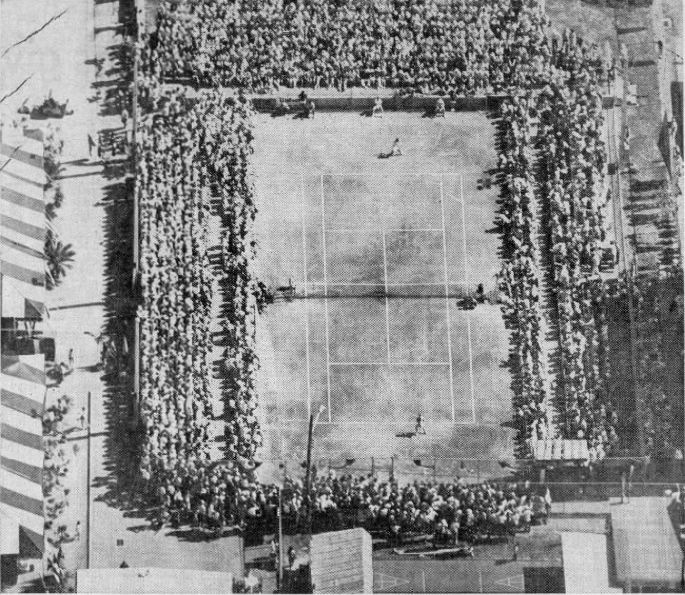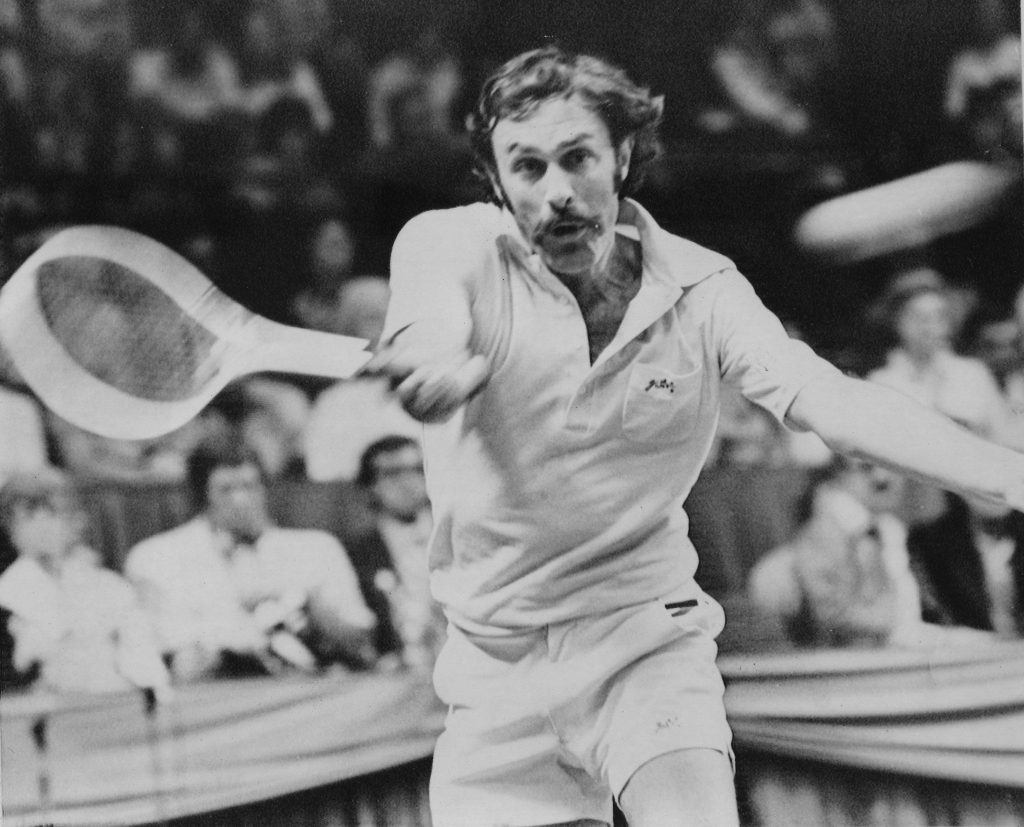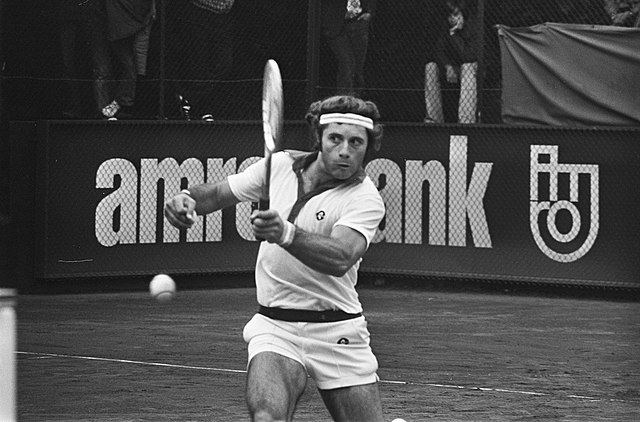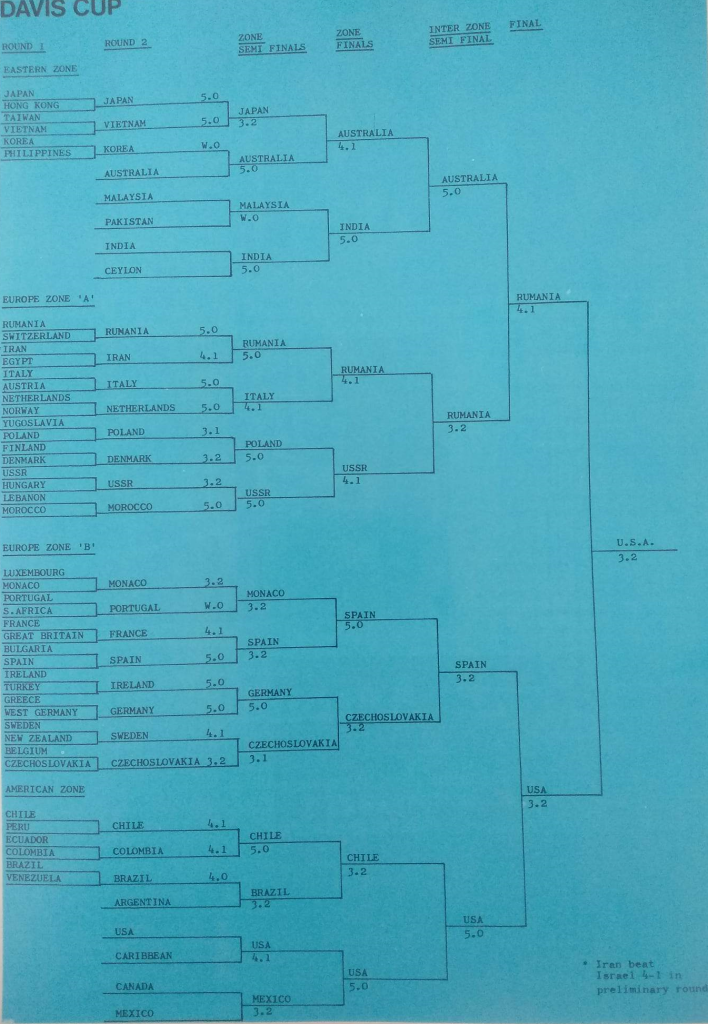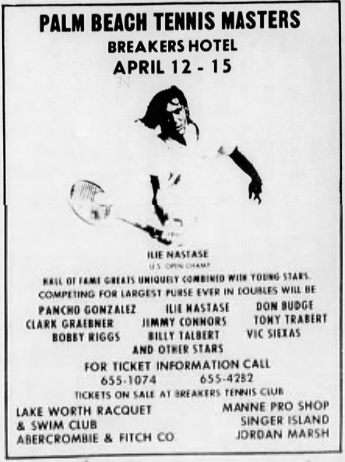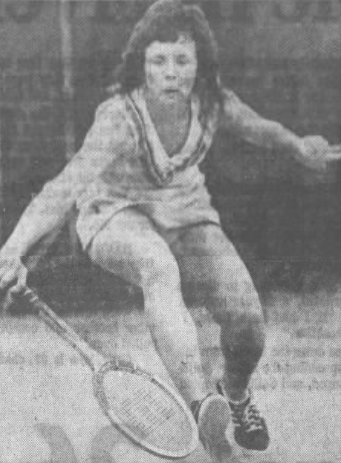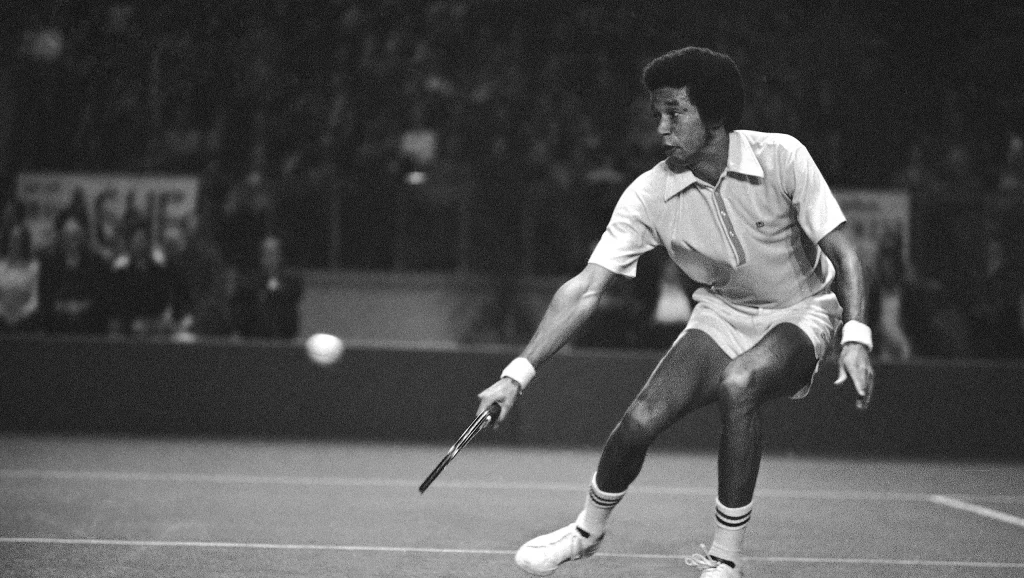The USLTA circuit in the beginning of 1973 was sometimes referred to as the “Chrissie and Evonne show.” Most of the leading lights of women’s tennis were signed up to Gladys Heldman’s rival Virginia Slims tour. Chris Evert and Evonne Goolagong had the talent and star power to draw crowds, but the rest of the field at the USLTA events was an often motley mix of juniors, journeywomen, and Eastern Europeans.
In fact, it was generous to include Evonne’s name at all. She was Chrissie’s equal in name recognition only. Evert entered the St. Petersburg final on April 22nd on a 21-match win streak. She had won five of six events, losing only a single match to Virginia Wade, a 9-7, third-set nailbiter in Dallas. She had dropped only two other sets in that time. Goolagong had won the first encounter between the two ladies, in the previous year’s Wimbledon semi-final. But since then, Chrissie had won four in a row.
The St. Pete event, held at Bartlett Park, had good memories for Evert. She had picked up her first adult title there two years earlier, when she was just 16. Steady as a backboard, she overcame an injured Billie Jean King in the semis, then allowed just three games to Julie Heldman in the final. She was soon popular enough to draw crowds anywhere, but her star was at its brightest in her native Florida. Fans in St. Petersburg “did everything but tear down the fence” to watch the final.
The championship match didn’t disappoint. Chrissie played her typical relentless game, forcing errors to take the first set. In the second, Goolagong evened the score with élan. Recovering the effortless brilliance that had won her the French and Wimbledon titles in 1971, she took the set, 6-0.
“It’s been a long time since I’ve lost a love set,” Evert said. “It was kind of frightening the way she did it.”
Chrissie could only be shaken so far. Goolagong’s streaks were famous for vanishing as quickly as they arose, and today was no different. The Australian won the first game of the final set, then Evert took five in a row. Goolagong fought back to 4-5 before the Floridian’s two-handed backhand finished the job.
Evert finished the eight-tournament USLTA circuit with six singles titles and total prize money of $41,350. She was, by far, the best player on the tour.
* * *
But how did she stack up against the Slims group? The division in women’s tennis left that question to be answered in Europe, where the field would finally come together in May.
The same day that Evert beat Goolagong in St. Petersburg, Margaret Court outlasted Rosie Casals across the state in Jacksonville. It marked Casals’s 23rd straight loss to the imperious Court, this time by a score of 5-7, 6-3, 6-1. Rosie had taken the first set on several other occasions, but she could only warn her colleagues on tour: “If you don’t beat Margaret in straight sets, you’re in trouble.”
Casals would have said the same thing to Chrissie. She was well aware of the young talent, having lost to Evert twice in 1972. But the Australian was still the woman to beat. “Without question,” Casals said after the final, “Margaret Court is the greatest in the world and will continue to be as long as she continues to play.”
* * *
Elsewhere this week:
- Ken Rosewall won his third title in as many weeks with a final-round victory in Charlotte over Arthur Ashe. He had struggled throughout the week, needing three sets against each of Ismail El Shafei, Tom Gorman, and Roscoe Tanner. But when the second set of the championship match went to a tiebreak, he took no chances, reeling off six points in a row to secure the decision.
- 16-year-old Björn Borg reached his first final as an adult, progressing through the all-European field in Monte Carlo before losing a straight-set final to Ilie Năstase.
- In other men’s events, young Americans made a mark. With the top players gone in Johannesburg, 21-year-old Brian Gottfried took the title on a walkover from Chile’s Jaime Fillol. Back at home, in Columbus, Georgia, Eddie Dibbs knocked out Jimmy Connors while 18-year-old Vitas Gerulaitis upset both Richard González and Clark Graebner. Dibbs won the final.
- As if that wasn’t enough teenage success stories for one week: The sibling duo of Buster (17) and Linda Mottram (15) won both singles events at the Cumberland Hard Courts tournament in Hampstead, England. Linda’s breakthrough was particularly impressive, as she overcame both Virginia Wade and former Wimbledon finalist Christine (Truman) Janes. The prize money was a pittance compared to other events around the world, but Buster and Linda didn’t even get the £60 and £45 promised to the winners. The International Lawn Tennis Federation didn’t allow any prize money at all for players under the age of 18. Tony Mottram, father of Buster and Linda, could sympathize: When he won the event in 1949 and 1951, there wasn’t prize money for anybody.
- 16-year-old Nick Saviano triumphed at the prestigious Easter Bowl junior tournament in Manhattan. Taking the 14-and-under title was a promising lefty from Queens named John McEnroe.
- Billie Jean King lost early in Jacksonville, a surprise victim of Wendy Overton in the deciding point of a nine-point, sudden-death tiebreak. By the end of the week, she was back in New York City, making a public appearance where she played three-point “matches” against all comers. Anyone who aced her won a prize. Sadly, I can’t find any reports of how the public fared that day against Madame Superstar.
And you thought the tennis calendar was crowded now.
* * *
This post is part of my series about the 1973 season, Battles, Boycotts, and Breakouts. Keep up with the project by checking the TennisAbstract.com front page, which shows an up-to-date Table of Contents after I post each installment.
You can also subscribe to the blog to receive each new post by email:
